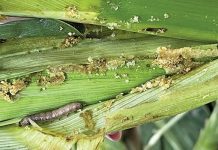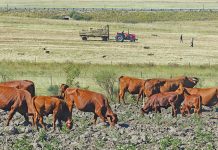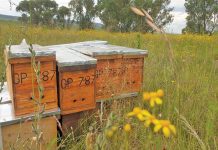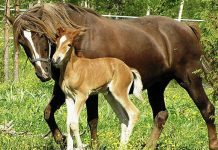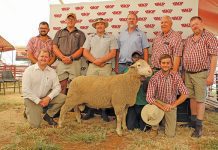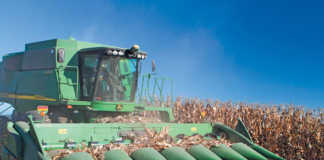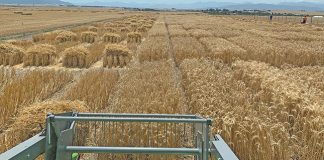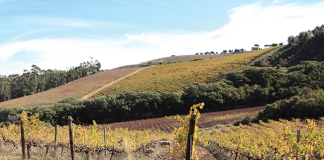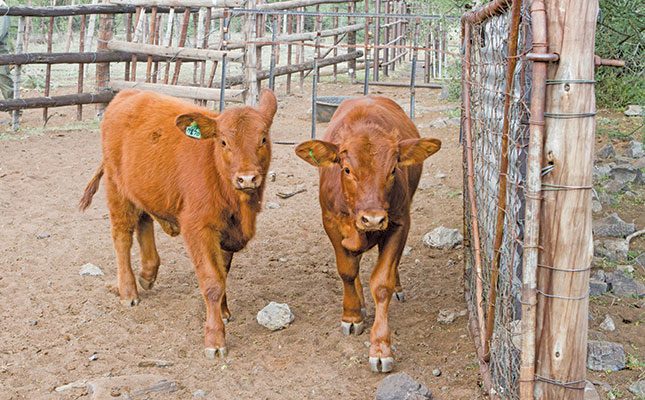
Photo: FW Archive
While I wrote about foot rot in the past, I have recently received many calls from people seeking advice about this condition, which, if left untreated, can result in lasting and severe damage to the hooves of livestock.
READ Biosecurity protocols to combat livestock diseases
Foot rot is caused by bacteria that thrive in muddy or waterlogged soil, so as part of your holistic approach to combating this problem, you can implement these measures:
- Raise the level of soil around drinking troughs and top these areas with shale (beware not to use sharp stones that can harm hooves), or lay flat stones so that water is unable to dam up.
- Make certain to regularly clear kraal areas from excessive mud and manure.
Plan handling areas and kraals on sloping ground where water is able to effectively drain away. - Create foot baths that zinc sulphate can be added into. Walk livestock through these baths that can be simply constructed by digging about 30cm deep and lining this indentation with damp course plastic and concrete about two to three times weekly.
- Try to avoid using kraal areas where infected animals have walked for at least seven to 10 days because the bacteria die during this period and cannot infect other animals.
Try to offer mineral and trace element licking blocks that bolster the animals’ immune system, as a lack of trace elements such as iodine in the diet can make them predisposed to being infected.
Symptoms
Infected animals usually initially had a cut or abrasion under or between the hoof digits that allowed a point of entry for the bacteria and will soon start to limp and show lameness.
It is at this point that you need to be proactive and start aggressive treatment without delay. Quarantine such animals if possible in order to prevent spreading of the bacteria to other animals.
On inspection, you may see visible injury between the hoof digits, and in more advanced cases, swollen lesions may occur that are characterised by foul-smelling pus.
READ Diagnosis and treatment of the main livestock diseases
If left untreated, the stubborn infection can spread into the inner recesses of the hoof, causing immense hoof and joint swelling and possibly irreparable damage.
Livestock suffering from advanced cases may also lose appetite and start looking emaciated. If the hoof becomes so necrotic (rotten) that it starts to disintegrate, the animal should be euthanised.
Treatment in order of priority
- Immobilise the animal and inspect the hoof, particularly between the hoof digits. Use soapy water first and then an iodine-based disinfectant such as Oberdine to thoroughly wash away any mud and manure.
- Remove any foreign objects, nails, or stones that may have become lodged.
- Carefully trim the hoof into original shape if it has grown out of proportion.
- Irrigate the hoof and between the digits again with iodine and then use zinc sulphate mixed into water (about a heaped table spoon in 1ℓ of clean water) to flush the hoof.
- If flies are a factor, immerse the entire hoof in healing oil for about 30 minutes.
- Repeat the iodine and zinc sulphate treatment every second day until marked improvement is noticed.
- After the first topical hoof treatment, inject the animal immediately with a short-acting oxytetracycline antibiotic and the day thereafter inject it with a long-acting oxytetracycline.
- Repeat the long-acting injection seven days later.
- During the period of recovery, try to keep the animal away from muddy areas, preferably on a hard surface free of mud and pooled water. You need to keep the hoof as dry as possible and while this may be difficult in the absence of stone-floored sheds, it allows treatment to be way more rapid and allows a better long term prognosis for severe cases.
Any animal that shows the slightest tendency to limp should be examined immediately, and it’s advisable to regularly inspect all animals for misshapen hoofs that may require trimming.
Trim very carefully and do not remove hoof tissue more than what constitutes a normal hoof shape.
If your community practices rotational grazing and has saved camps or grazing areas, this resting process is not only advantageous to valuable grass plants but also assists in allowing some bacteria thriving in those areas to die off.
The constant presence of livestock allows such bacteria to keep its life cycle going.
Shane Brody is involved in an outreach programme aimed at transferring skills to communal farmers.

